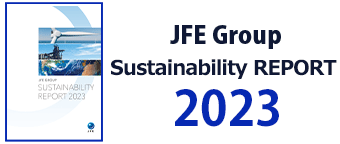Development and Provision of Eco-friendly Processes and Products
Basic Policy
In accordance with its corporate philosophy of contributing to society with the world's most innovative technology, the JFE Group develops and provides processes and products for addressing climate change and reducing environmental impact. In the JFE Group Environmental Vision for 2050, we announced our initiatives for reducing the CO₂ emissions of the Group and expanding our contribution to reducing CO₂ emissions in society as a whole. Apart from these initiatives, we also strive to enhance our corporate value and play our part in realizing a sustainable society through the development and provision of various processes and products related to preserving the global environment.
In the steel business, the Steel Research Laboratory is engaged in research and development under the Environmental Management System (environmental strategies) to create a recycling-oriented society capable of sustainable development by providing the world's best technologies and sparking innovation. In the engineering business, the Research Center of Engineering Innovation conducts research and development of new technologies to support the society of the future, including the creation of next-generation energy and solutions to environmental problems.
JFE Steel: Research and Technological Development
JFE Engineering: Technological Development
Initiatives
Primary Eco-friendly Products and Technologies by Business Segments
Each operating company of the JFE Group leverages its respective strengths to develop and provide a variety of eco-friendly products and technologies.
Primary Eco-friendly Products and Technologies
| Product/Technology | Environmental Benefit | Operating Company | Status |
|---|---|---|---|
| Technology for optimized combustion of coke furnace | Save energy and reduce CO₂ emissions | JFE Steel | Operation in production process |
| Ferro-coke | Save energy and reduce CO₂ emissions | Experimental operation | |
| Fuel/power operation guidance system | Save energy and reduce CO₂ emissions | Under development | |
| Resource saving silicon gradient steel sheet | Save resources and reduce CO₂ emissions | Commercialized | |
| Thin, fatigue-resistant steel for steel structures (AFD® steel) | Recycle resources and reduce CO₂ emissions | Under development | |
| Denjiro® insulation-coated pure-iron powder for soft magnetic composites | Recycle resources and reduce CO₂ emissions | Commercialized | |
| Ultra-thick, high-strength steel plate | Recycle resources and reduce CO₂ emissions | Commercialized | |
| Materials used in line pipe for transporting high-pressure hydrogen gas | Recycle resources and reduce CO₂ emissions | Under development | |
| Calcia Improvement Material | Recycle resources and preserve biodiversity | Commercialized | |
| Steel slag hydrated matrix | Recycle resources and reduce CO₂ emissions | Commercialized | |
| Precast concrete products mixed with finely ground blast furnace slag | Recycle resources and reduce CO₂ emissions | Commercialized | |
| Granulated blast furnace slag | Recycle resources, preserve biodiversity, and reduce CO₂ emissions | Commercialized | |
| Marine Stone® | Recycle resources, preserve biodiversity, and absorb and secure CO₂ | Commercialized | |
| Frontier Rock® | Recycle resources, preserve biodiversity, and absorb and secure CO₂ | Commercialized | |
| Marine Block® | Recycle resources, preserve biodiversity, and absorb and secure CO₂ | Commercialized | |
| Woody biomass combustion power plant | Renewable energy and reduce CO₂ emissions | JFE Engineering | Construction |
| PPA solar power generation model | Renewable energy and reduce CO₂ emissions | Business expansion | |
| Digital transformation service for boiler power plant | Save energy and reduce CO₂ emissions | Business expansion | |
| Dam optimal operation system | Renewable energy, reduce CO₂ emissions, and responses to climate change (reduce flooding) | Under development and verification test | |
| Recycle PET bottles | Recycle resources, reduce CO₂ emissions, and preserve biodiversity (marine environment conservation) | J&T Recycling | Business expansion |
| Overseas water treatment | Environmental conservation (sewage treatment) | JFE Engineering | Business expansion |
| Overseas bridge business | Environmental conservation (reduce traffic) | Business expansion | |
| Contract molding business using metal 3D printer | Save energy and resources | Business expansion | |
| Further expansion of global supply chain for the Steel Sheets Business | Save energy and reduce CO₂ emissions | JFE Shoji | Sales expansion |
| Building a supply chain for offshore wind power generation industry | Renewable energy | Sales expansion | |
| Expanding business in biomass fuels | Renewable energy and reduce CO₂ emissions | Sales expansion | |
| Expansion of scrap trading to help develop a recycling-oriented society | Recycle resources and reduce CO₂ emissions | Sales expansion |
For further details on the JFE Group Environmental Vision for 2050, refer to the following resources.
The JFE Group Environmental Vision for 2050
The JFE Group Environmental Vision for 2050, presentation material on May 25, 2021
Certification by SuMPO's EcoLeaf Environmental Labeling Program
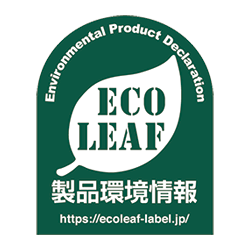
JFE Steel has acquired certification for EcoLeaf, a Japanese environmental product declaration (EPD) program managed by the Sustainable Management Promotion Organization (SuMPO) in Japan for three types of steel sheets for cans: tinplate, JFE Universal Brite (laminated steel sheet), and tin-free steel; five types of building materials: H-beams, JFE Super HISLEND-H beams, extra- thick H beams, construction steel plates, and construction steel columns ; and three types of steel plate products: for offshore structures and wind power generating equipment, ship building, and UOE steel pipes.
EcoLeaf is a Type III EPD program managed by SuMPO for quantitatively disclosing the environmental impact of products and services throughout their life cycle, from raw material procurement to disposal and recycling in accordance with ISO 14025:2006 (environmental labels and declarations, Type III Environmental Declarations, Principles and Procedures). The environmental impact of our products is presented as graphic representations of data to increase transparency. The disclosure of environmental impact data with fairness and reliability assured by third-party review and verification enables customers to quantitatively and objectively evaluate the environmental impact of the products they use.
JFE Steel will continue to actively obtain and disclose EcoLeaf certifications for its products.
SuMPO Environmental Labeling Program
Technology for Optimized Combustion of a Coke Furnace
JFE Steel has completed technological development of a new facility at the coke furnace in the West Japan Works (Fukuyama District), which is capable of saving energy and cutting CO₂ emissions, by using digital-twin technology, and has started the operation of the process.
We intend to transform into an intelligent steel works through the deployment of cyber physical systems (CPSs) as part of our digital transformation (DX) strategy. Digital twins are a core CPS technology in which physical systems and processes in the real world are replicated with equivalent properties in a digital model (“twin”) in a virtual space, allowing for an accurate simulation of the real world. These digital models make it possible to visualize highly inaccessible internal areas of facilities to optimize the design and operation of manufacturing processes for which internal conditions have conventionally been difficult to confirm via sensors or direct observation. The use of the digital twin also makes it possible to predict the effects of major changes to facilities or operations.
The technology was applied to process improvements for the operation of the Number 5, D Group coke furnace in the Fukuyama District of the West Japan Works. The information obtained from the digital twin of coke furnace constructed in virtual space confirmed that a mechanism for partially controlling air supply will achieve greater operational efficiency, information that the company can use for calculating the amount of supplemental air needed to optimize combustion. JFE Steel then applied these learnings in developing the new facility, which is now in commercial operation. The company has achieved an approximately 5% reduction in the amount of fuel used and has reduced its CO₂ emissions by 6,600 tonnes a year, compared to the level with the furnace's previous design. This project was chosen for the Japanese government's Sustainable Open Innovation Initiative funding.
Architecture of the coke furnace and the digital twin model
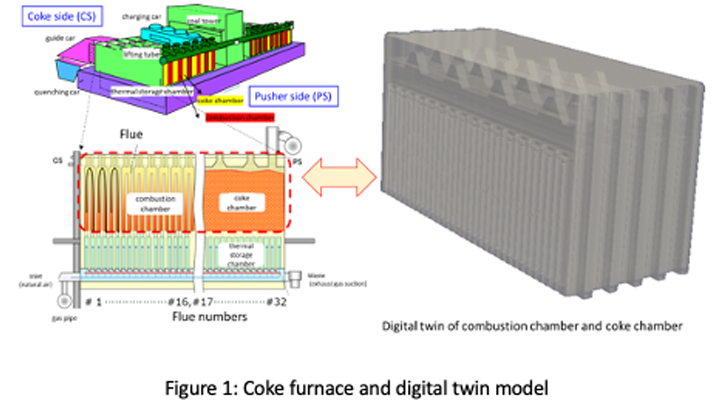
Ferro-coke
Ferro-coke is an innovative raw material for blast furnaces made by mixing low-grade coke and iron ore. In this energy-saving technology, metallic iron contained acts as a catalyst, reducing the amount of coke required in the furnace and thus significantly reducing CO₂ emissions in the iron making process.
In the six years from FY2017 to FY2022, JFE Steel engaged in a project to develop environmental technology for the steelmaking process, and technological development of the iron making process using ferro-coke, a project by the New Energy and Industrial Technology Development Organization. In the project's final year, the company performed tests at a blast furnace in the West Japan Works (Fukuyama District) using ferro-coke produced in a medium-scale facility and confirmed that the coke ratio was reduced. Going forward, to achieve the final goal of the technology development to establish a technology for reducing the energy consumption in the iron making process by approximately 10%, JFE Steel will use a general-purpose, high-performance blast furnace simulator* that reflects the mass and energy balance model applicable to the model steelworks that the company developed, along with the above results, to identify issues and examine the operating conditions needed to achieve the final target.
*The simulator was developed by the Nippon Steel Corporation during the project term.
How energy saving and CO₂ reduction are assessed at model steelworks
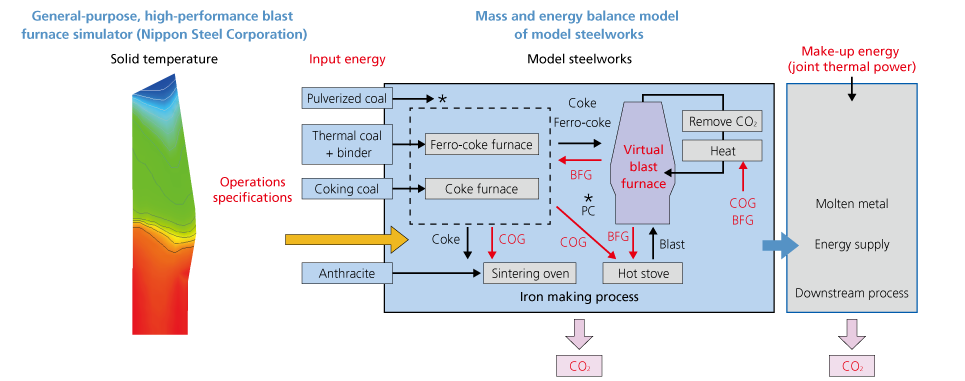
Fuel and Power Operation Guidance System for Steelworks
JFE Steel developed a fuel and power operation guidance system for steelworks and succeeded in saving energy and reducing CO₂ as well as fuel and power by optimizing the fuel, steam, and electric power used in the steelmaking process.
Previously, operators determined various factors such as the distribution of byproduct gas to each process, amount of fuel (heavy oil, city gas, etc.) and electricity to purchase, and the amount of byproduct gas stored, taking into account energy demand and supply (amount generated and used) as well as the operating conditions of power generation facilities, to minimize cost and energy loss. However, it was difficult to use this method to accurately estimate the change in energy demand and supply. The guidance system (diagram 1) developed by JFE Steel uses voluminous real-time measurement data (1) obtained through a cyber physical system (CPS)* and the precise production plans of each factory to predict future demand and supply with high accuracy (2), and by taking into account information such as in-house power generation capacity (3), fuel and power simulation allows for the calculation of the optimal operating conditions with the lowest possible purchase from external sources (4), and the results are fed back to guide the operator (5).
The system's development was awarded the Academic Award (Technical Division) of the 2022 Japan Institute of Energy Award . JFE Steel established the JFE Digital Transformation Center (JDXC®) to promote CPS within the manufacturing process and other digital transformation initiatives to achieve innovative production improvements as well as stable operations. We remain committed to realizing a sustainable society by adopting digital transformation to address the various issues identified at production sites.
*A system that brings together a vast amount of sensor information about physical space as big data in cyberspace and generates value by feeding back in real time the results analyzed by various measures for application in the physical space.
Guidance System Overview
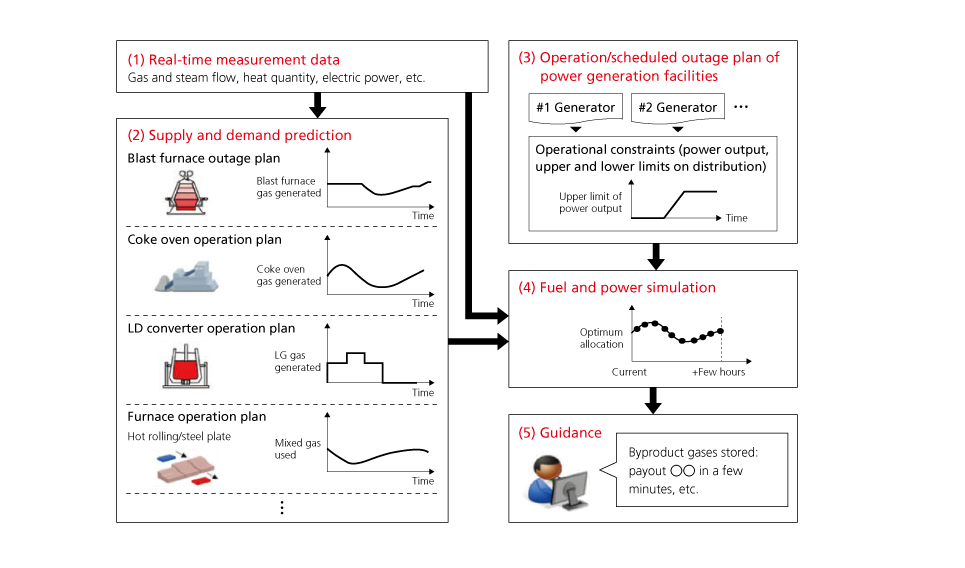
Resource Saving Silicon-Gradient Steel Sheet
The recent trend toward increasing driving frequency due to the downsizing of electrical equipment has intensified the need to reduce iron loss*¹ in the high-frequency range for electrical steel sheets*², widely used as iron core material for electrical equipment such as motors and transformers. Meeting this demand depends upon increasing the concentration of silicon (Si), an element that strengthens electrical resistance. However, increasing concentration also causes magnetic flux density to decrease at the same time.
To overcome this, JFE Steel developed JNHF®, JNSF®, and JNRF® using its proprietary chemical vapor deposition (CVD) continuous siliconizing process technology for controlling Si concentration distribution. These products exhibit low iron loss at high frequencies and high magnetic flux density, significantly contributing to greater efficiency while downsizing electrical equipment, and they are used as an iron core material for reactors for solar power generation and high-speed motors.
In recognition of the positive social impact of this development, we received the 2022 Award for Science and Technology from the Minister of Education, Culture, Sports, Science and Technology under the development category of the science and technology field. JFE Steel will continue to contribute to improving electrical equipment by raising efficiency, reducing size, and saving energy by providing high-performance, high-grade electrical steel sheets.
*¹The loss of energy, primarily as heat, that occurs when the iron core is excited by an alternating current. The less iron lost, the higher the efficiency of electrical equipment.
*²Electrical steel sheets are obtained by adding silicon to iron and are widely used as iron core materials in equipment such as motors and transformers.
CVD Continuous Siliconizing Process and Si Concentration Distribution Control
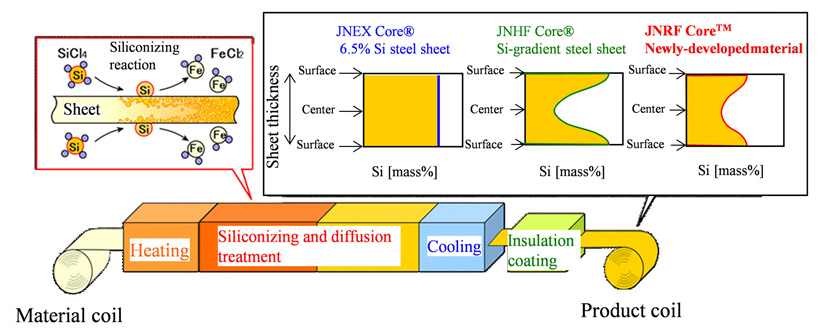
Further Expanding Electrical Steel Sheet Production Capacity at the West Japan Works (Kurashiki District)
JFE Steel aims to expand the electrical steel sheet capacity of its West Japan Works (Kurashiki District) in the first half of FY2024 and is also considering a plan to expand the capacity even further in the future.
The electrification of automobiles is accelerating amid the global push toward carbon neutrality. The demand for high-grade, non-oriented electrical steel sheet products used in the drive motors of electric vehicles is expected to continue expanding in parallel with the further tightening of global environmental regulations. In response, JFE Steel has decided to further expand production capacity to accommodate the rising demand.
The company expects to continue investing in expanding its supply capacity for a high-grade, non-oriented, and grain-oriented electrical steel sheet in anticipation of further increases in worldwide demand as more automobiles become electric, energy use becomes more efficient, and renewable energy is more widely adopted.
The company will steadily strengthen its overall manufacturing operations in Japan with world-class technologies for manufacturing advanced products that reduce CO₂ emissions and thereby contribute to a more sustainable world.
About Electrical Steel Sheets
Electrical steel sheets contain additives such as silicon and aluminum and offer excellent magnetic properties, including high magnetic flux density and low iron loss. Two types of sheet are available. The non-oriented electrical steel sheet offers excellent magnetic properties that are nearly uniform in all directions and is used in the iron cores of motors. The grain-oriented electrical steel sheet exhibits superior magnetic properties in a single (rolling) direction and is used in the iron cores of power and distribution transformers.
Overview of the Expansion
Total expected investment: approximately 46.0 billion yen
Target startup year: FY2026
Expected production capacity: triple the plant's original production capacity for the top-grade, non-oriented electrical steel sheet for electric vehicle primary motors
Anti-Fatigue Damage Steel for Increased Bridge Safety (AFD® Steel)
JFE Steel has developed a thin version of its anti-fatigue-damage steel (AFD® steel) with improved fatigue resistance. The steel plate, produced by a plate mill at the East Japan Works (Keihin District) using the Super-RQ system with advanced cooling control, has a minimum thickness of 9 mm and retains the mechanical properties of conventional plates while offering improved fatigue resistance. Compared to AFD® steel, the thin-walled version is expected to be deployed in a wider range of applications, including bridge structural members that are prone to cracking over time.
Ensuring low maintenance and renewal costs associated with aging is crucial for steel structures purposed for long-duration use. Thin-walled members of bridges are susceptible to fatigue cracking over time, and the cracks may increase in size between inspections and maintenance. The newly developed AFD® steel increases the durability of steel structures because it can be used in places prone to fatigue cracking. Compared to ordinary steel, AFD® steel reduces the fatigue-crack growth rate*¹ to half or less of the upper limit of ordinary steel and roughly doubles product life, thereby reducing life cycle costs associated with long service life.
Looking ahead, JFE Steel will continue to improve the performance and quality of steel to achieve superior durability, safety, and economy in steel structures, including bridges, ships, construction machinery, and industrial machinery, thereby contributing to a more sustainable world.
*¹Anti-Fatigue-Damage
*²Fatigue damage is caused by small, repeated forces that create cracks that gradually grow until the material fails. Since these cracks propagate incrementally with the repeated application of force, the length over which the cracks propagate per repetition is called the fatigue crack growth rate.
Examples of Thin AFD Steel Application
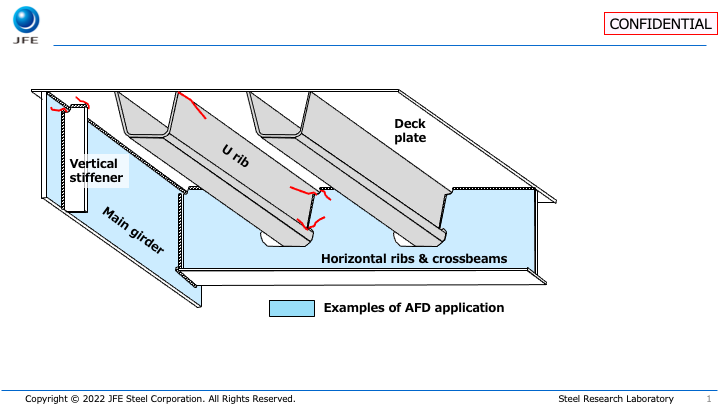
Developed thin, fatigue-resistant steel for steel structures
Denjiro® Insulation-Coated Pure-Iron Powder for Soft Magnetic Composites
The dual demand for extra-compact and high-torque features in motors is growing in parallel with the advance of electric vehicles and other initiatives for a carbon-neutral society. JFE Steel developed Denjiro®, an insulation-coated pure iron powder for soft magnetic composite to meet this demand.
A soft magnetic composite is an iron core made by applying an insulation coating to a soft magnetic* iron powder and then compression-molding the powder. Compared to electrical steel sheets, which are widely used for iron cores, soft magnetic composites exhibit low loss at high operating frequencies and possess magnetic characteristics well suited for complex-shaped iron cores. The manufacturing yield of soft magnetic composites is favorable, allowing high-rpm motors to be produced at reduced cost. Furthermore, copper wire can be easily recovered when these motors are disposed, making it a highly recyclable product.
A soft magnetic composite developed with Denjiro® is one of the best materials for high-rpm and axial gap motors that favor high torque. With the commercialization of Denjiro™, the JFE Group has established a system for providing a broad lineup of soft magnetic materials for nearly all currently applicable frequency ranges, from electrical steel sheets to soft ferrite cores, and has emerged as the world's only comprehensive supplier that can provide optimal one-stop solutions for all power supply equipment, including motors.
*Soft magnetism is a property in which the magnetic force flexibly changes in response to changes in electric current. These materials are suitable for use in the iron cores of motors and transformers.
JFE Group's Soft Magnetic Materials
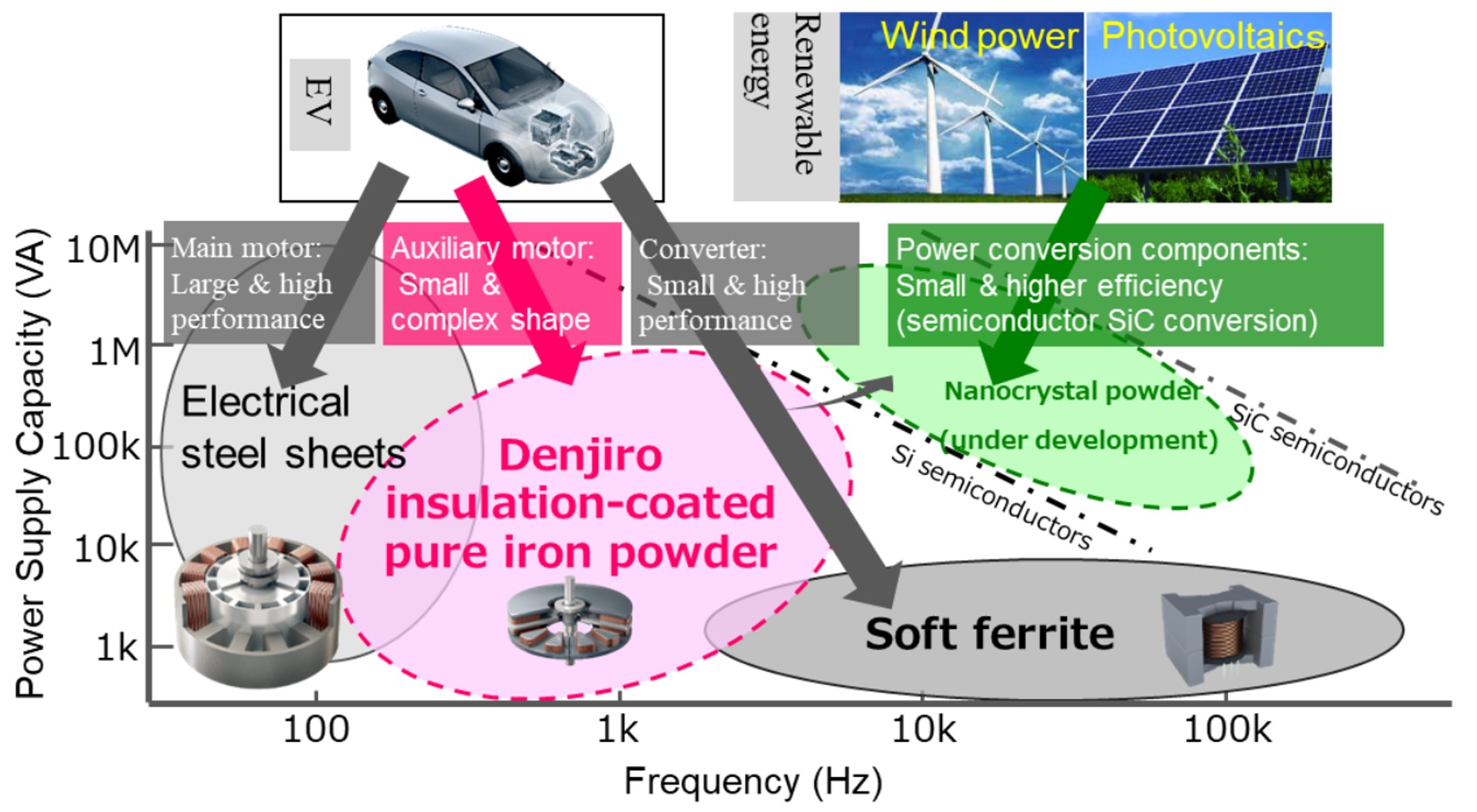
Development of the Denjiro™ Insulation-coated Pure-iron Powder for Soft Magnetic Composites
Extra-Thick, High-Strength Steel Plate for the Materialization of Large Container Ships
The world's thickest crack arrest steel plate*¹, developed by JFE Steel, is applicable to large container ships, with its 460 MPa class yield strength and a thickness of 100 mm. The technology is the first in the world to satisfy two different properties in the thick steel plate: weldability and crack arrestability. Container ships are designed with wide open areas at the top of the deck. Since the hull is exposed to heavy wave force throughout the voyage, the top of the deck and the side of the hull (hatch side coaming) must be built with steel that is thick with high strength. In response to the recent trend of upsizing container ships for more efficient transportation, the thickness of steel plates has increased from 50 mm to 100 mm, with an expected yield strength of 460 MPa. At the same time, an excellent crack-arrest property is required to prevent the propagation of brittle crack. To ensure the safety of hulls that are rapidly becoming larger, the International Association of Classification Societies mandated that all 80 mm to 100 mm class thickness steel used in hatch side coaming must have at least 8,000 N/mm3*² arrest toughness (Kca). Using TMCP technology*², JFE Steel precisely controlled the heating and rolling temperatures and established a proprietary technology that increases the crystallization ratio in the central part of the steel plate's thickness, helping ensure high brittle crack arrestability in the world's thickest, 100 mm, high-strength steel plate.
The development of this technology received the 2023 Award for Science and Technology from the Minister of Education, Culture, Sports, Science and Technology under the development category of the science and technology field for significantly contributing to the materialization of ultra-large container ships. It has been awarded many other prizes including the 2018 Invention Prize of National Commendation for Invention and the 2019 Okochi Memorial Prize. We will continue to improve the economic efficiency, safety, and reliability of vessels by providing high-performance, high-quality steel material while meeting the diversified needs of customers and also addressing global environmental concerns, and contributing to the realization of a sustainable society.
*¹A steel plate with excellent performance in minimizing vessel damage by stopping brittle crack propagation in the event of weld cracking.
*²A thermo-mechanical control process technology that improves the strength and toughness of steel material in an online process using controlled rolling and accelerated cooling systems.
R&D into Line Pipe for Transporting High-Pressure Hydrogen Gas
JFE Steel's research and development into the property evaluation of line pipe for transporting high-pressure hydrogen gas has been selected for inclusion in a hydrogen-related technical development under The Nippon Foundation*¹—DeepStar*² Joint Research & Development Program on Offshore Oil and Natural Gas*³ (“the Project”), which is being conducted in cooperation with major oil companies. JFE Steel will work with DeepStar consortium members ExxonMobil of the U.S.A. and TotalEnergies of France to establish evaluation criteria and methods using the company's Mighty Seam® electric-resistance-welded steel pipe*⁴ to transport high-pressure hydrogen for realizing the world's first commercial high-pressure hydrogen pipeline.
The large-scale use of hydrogen for various purposes, such as fuel for power generation, is being widely considered for achieving carbon neutrality by 2050. The use of a pipeline similar to the current supply chain for natural gas is being explored for transporting hydrogen in bulk from the receiving terminal to where it is needed.
Meanwhile, hydrogen causes steel materials to become brittle (reducing ductility). Consequently, methods for evaluating the performance of materials are being established in countries other than Japan to support safety standards and quality inspections. In the Project, JFE Steel's Steel Research Laboratory in Chiba, Japan, will research properties required for high-pressure hydrogen pipelines, particularly through the application of the Engineering Critical Assessment*⁵. The company will also evaluate performance under high-pressure hydrogen environments using a steel pipe specimen. Technological developments that meet the needs of oil companies will be pursued through strengthened cooperation under the shared goal of contributing to decarbonization.
*¹A public interest incorporated association designated as a ship promotion organization by the Ministry of Land, Infrastructure, Transport and Tourism of Japan. Funding for its activities is drawn from the proceeds of motorboat racing held by local governments throughout Japan, to primarily support maritime shipping-related business, engage in public services/welfare business, and international cooperation.
*²An offshore technology development consortium consisting of businesses that engage in globally exploring, developing, and producing offshore oil and natural gas, such as Chevron (U.S.), Shell (U.K.), and Equinor (Norway), as companies that carry out offshore oil field development and production, and other businesses, universities, and research institutions that offer products and services to those businesses.
*⁴An electric-resistance-welded steel pipe for line pipe, with excellent weld quality.
*⁵A technology for evaluating safety from a mechanical standpoint, by comparing the forces acting on a structure with material toughness obtained from material testing.
Calcia Improvement Material
Calcia improvement material is a slag product that uses converter-type steelmaking slag as raw material and is manufactured by controlling the composition and adjusting particle size. Dredged soil mixed with calcia improvement material is called calcia improvement soil, which is stronger than the original weak dredged soil and is therefore able to prevent dredged soil from dissipating into the surrounding area and having a negative environmental impact placed in water.
This enables the effective use of weak dredged soil in land reclamation, shoal and tideland construction, and refilling former dredging sites. Calcia improvement soil has been used to construct a mid-section submerged breakwater* (Shin Honmoku Pier, Port of Yokohama), the main embankment material for creating a shallow area (incidental facilities at the sediment disposal site, Tokuyama-Kudamatsu Port) and backfilling material for an earthquake-resistant quay wall in the Mino offshore area, Fukuyama Port.
*An embankment built under the water surface on the inside of a perimeter wall to divide the land into sections for reclamation.
Calcia Improvement Material and Calcia Improvement Soil
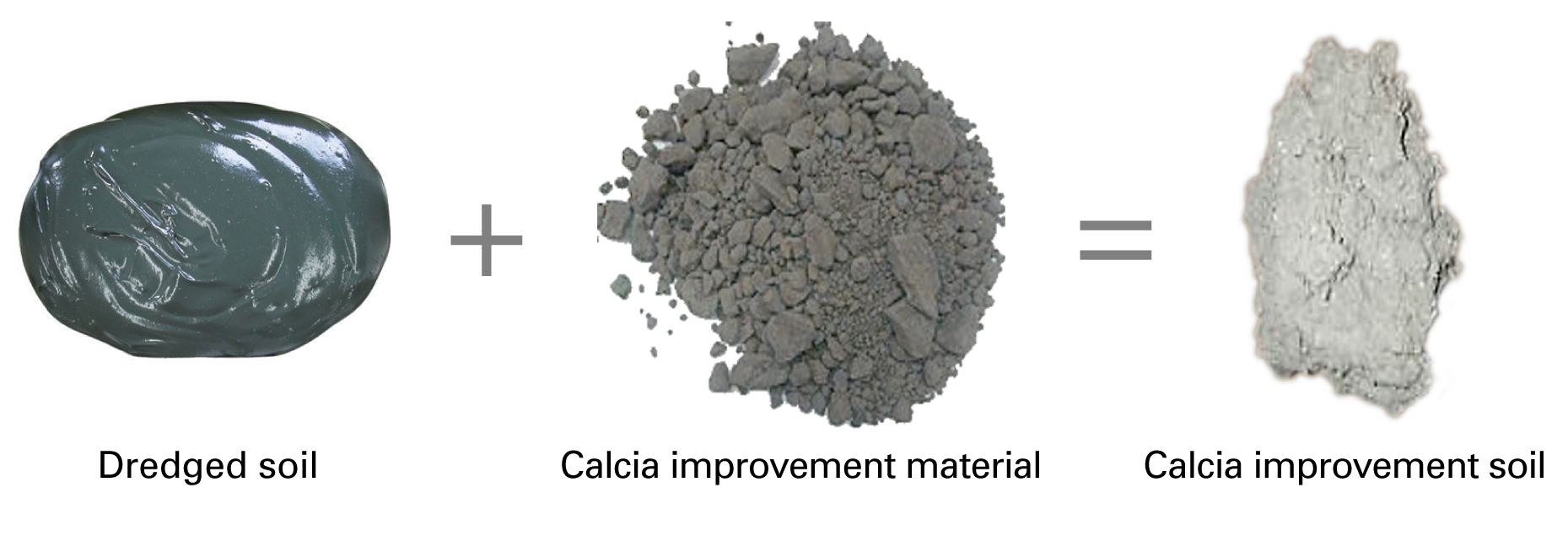
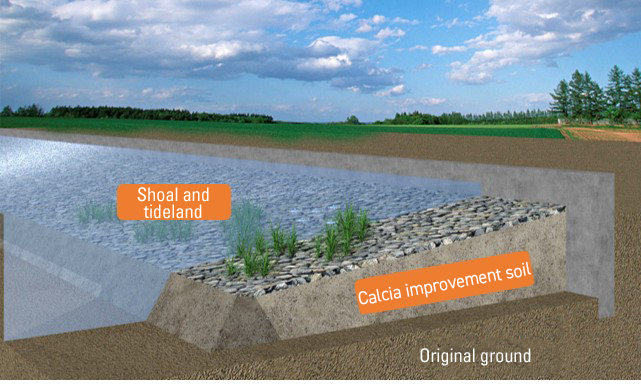
Steel Slag Hydrated Matrix
Steel slag hydrated matrix is a steel slag product that can be used as a substitute for concrete but uses ground granulated blast furnace slag instead of cement, and steel slag instead of natural gravel and sand aggregate, as its ingredients. It effectively uses steel slag and does not rely on natural aggregate, thereby reducing environmental impact, and uses less cement, in turn reducing CO₂ emissions.
There are many examples of blocks and artificial stones made from steel slag hydrated matrix being used as a substitute for concrete blocks and natural stones in harbor works, including the Runway D construction project at Haneda Airport by the Ministry of Land, Infrastructure, Transport, and the coastal reconstruction project after the Great East Japan Earthquake. In addition, we are conducting on-site monitoring in the Katsunan Central Zone of Chiba Port with the help of a local fishing association to assess the impact of these blocks on marine biodiversity.
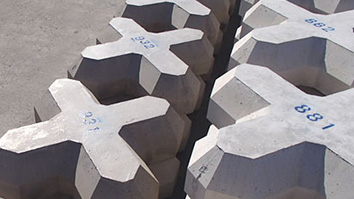
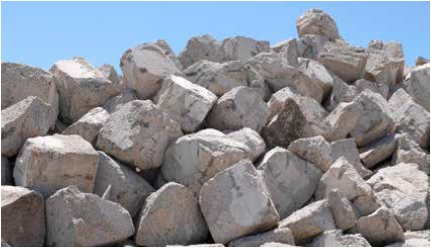
Precast Concrete Products Mixed with Finely Ground Blast Furnace Slag
Finely ground blast furnace slag can be used as a cementing material in concrete. This type of concrete exhibits significantly higher durability under harsh conditions such as applications in sewers and exposure to anti-freeze agents. Its effectiveness in reducing environmental impact is widely understood, although there has recently been growing interest in its practical applications for concrete constructions that require higher durability.
As one of the deliverables for the Japanese government's Strategic Innovation Promotion Program, the Japan Society of Civil Engineers published a draft guideline in March 2019 on the application of finely ground blast furnace slag to precast concrete product, and its application now includes precast concrete slabs installed in highways and piers. With the application of finely ground blast furnace slag in concrete, the durability of precast products is expected to be greater and more consistent, allowing them to contribute to building national resilience.
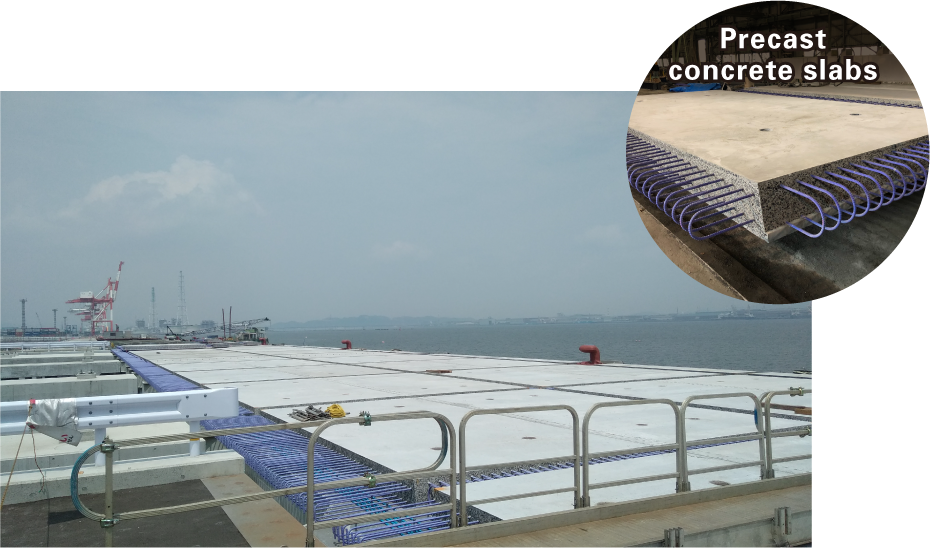
Use of Granulated Blast Furnace Slag to Reduce CO₂ Emissions
Granulated blast furnace slag in crushed and powdered form can be mixed with cement and used as a substitute for cement for making concrete. This leads to reducing the production of cement, thus lowering CO₂ emissions. For example, producing 1 tonne of blast furnace slag cement with 45% of its content substituted with granulated blast furnace slag emits 42% less CO₂ than conventional cement. In FY2021, JFE Steel supplied approximately 6.6 million tonnes of granulated blast furnace slag to cement production, equivalent to a reduction of approximately 4.74 million tonnes of CO₂ emissions.
CO₂ Emissions for Producing 1 Tonne of Cement (Unit: kg-CO₂/ton)
| CO₂ Emissions Source | Regular Cement | Blast Furnace Slag Cement |
|---|---|---|
| Limestone | 476 | 270 |
| Electricity/energy | 283 | 170 |
| Total | 759 | 440 |
*Source: Data published by the Japan Cement Association in 2022
Restoring Marine Ecosystems Using Steel Slag Products
Marine Stone® is a grain-size-adjusted steel slag that controls the generation of hydrogen sulfide from the silty sediment in enclosed coastal seas and improves the environment in which organisms can live. Its effectiveness in improving marine environments is widely recognized, and the joint project with Hiroshima University has received external commendations.
Frontier Rock® is another steel slag product that consists of artificial stones made from steel slag hydrated matrix and provides an excellent base for seaweed beds and fishing reefs. A submerged bank built on the seabed off the coast of Minami-Izu Town, Shizuoka Prefecture, has become a gathering place for large perennial seaweeds as well as useful fishery resources such as lobsters, turban shells, and a wide variety of fish. We are also testing the effects of Marine Block® as beds for corals.
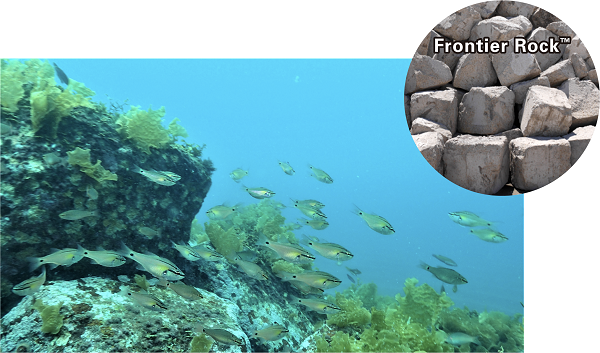
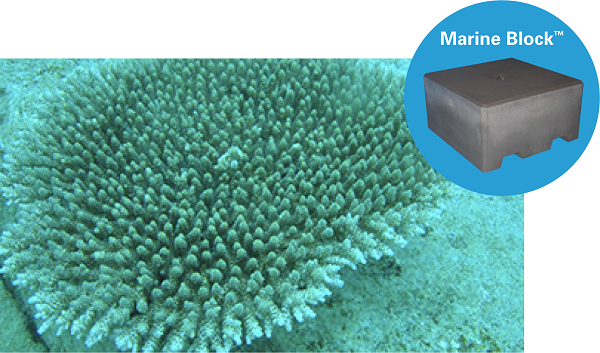
Initiatives for Blue Carbon Using Steel Slag Products and Acquisition of J Blue Credit®
In recent years, research on blue carbon (carbon absorbed and stored by living organisms in the ocean) has been advancing. JFE Steel has been participating in the research by creating a seaweed bed using steel slag products and measuring the amount of carbon captured by the entire bed.
The company has been collaborating with Koujiro Fisheries Cooperative (Iwakuni City, Yamaguchi) and the National Institute of Technology, Ube College (Ube City, Yamaguchi) on a project to create a seaweed bed and ecosystem using recycled materials at areas around Shinto, Iwakuni City, since FY2012. The initiative involves creating a seaweed bed with rich biodiversity using Marine Stone®, a grain-size-adjusted steel slag, and other steel slag products, and measuring CO₂ absorption of the created beds. The cumulative amount of CO₂ absorbed and stored from 2018 to 2021, which totaled 79.6 tonnes, received J Blue Credit® certification by the Japan Blue Economy Association . This was the first certification ever given to a three-party joint project by the Fisheries Cooperative, academia, and private business. The seaweed bed created through the project had the co-benefits of offering a gathering place for diverse fish. The sea area is also useful for education and research.
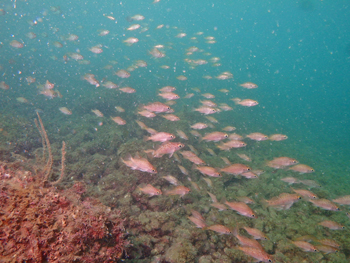
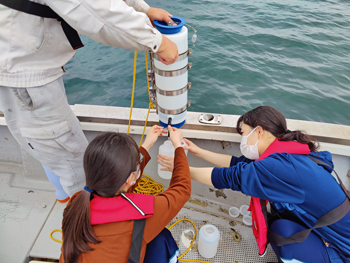
JFE Steel and Tohoku University's Collaborative Research Laboratory for Green Steel
In February 2022, JFE Steel and Tohoku University jointly established the Collaborative Research Laboratory for Green Steel within the university's Graduate School of Engineering to research eco-friendly steel materials and production metho-ds for the carbon-neutral era.
The Collaborative Research Laboratory is managed under a cross-divisional system and develops collaborations across a wide range of fields, including the development of steelmaking processes and materials. This will facilitate a multifaceted approach to resolving issues related to low-carbon steelmaking processes and to discover innovative development themes from new perspectives. Furthermore, we will dispatch young researchers to nurture highly specialized human resources who will lead the next generation of the steelmaking industry.
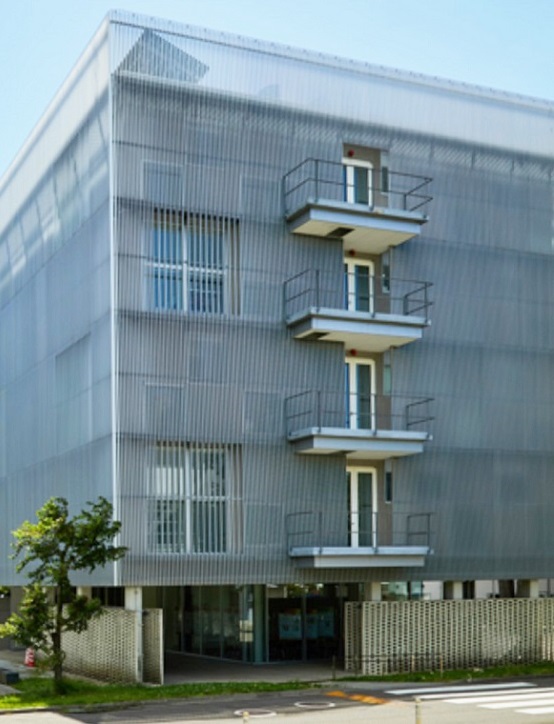
JFE Steel and Tohoku Univ. Establish Collaborative Research Lab for Green Steel
JFE Engineering's Commitment through Its Business
With the corporate purpose “Foundation of Life—Just For the Earth” in mind, JFE Engineering is committed to achieving the SDGs in five areas: waste to resources, carbon neutrality, combined utility services, infrastructure, and digital transformation (DX).
Waste to resources businesses include food recycling, plastic recycling, and waste incineration/power generation. Businesses related to carbon neutrality focus on renewable energies, such as offshore wind, solar, biomass, and geothermal power generation. Combined utility services offered by the company include utility services (e.g., water, electricity, gas) that address regional concerns by launching new local electric power companies and offering heat supply services. The company's infrastructure business constructs bridges, gas plants, waterworks plants, pipelines, and other infrastructure by identifying needs such as robustness and longer service life. The DX project involves improving the efficiency of daily work as well as providing products and services that leverage digital technologies such as AI and IoT.
JFE GROUP REPORT 2021 (PP. 43-44)
Commercialization of One of Japan's Largest Woody Biomass Combustion Power Plants
The construction of Tahara Biomass Power LLC, a 112 MW woody biomass combustion power plant, one of the largest of its kind in Japan, with jointly investment by JFE Engineering, Chubu Electric Power Co., Inc., Toho Gas Co., Ltd., and Tokyo Century Corporation, began in 2022, with startup targeted for September 2025. In biomass power generation, wood pellets and other biofuel are combusted to generate electricity. This renewable energy source features easily adjusted output and can stably produce power, thereby contributing to the realization of a carbon-neutral, sustainable society.
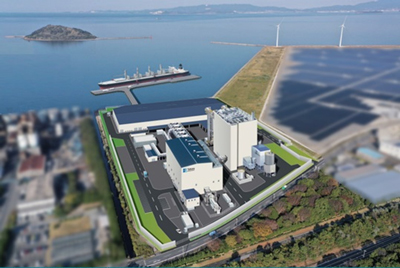
Construction Begins for One of Japan's Largest Biomass Power Plants(Japanese only)
Expanding PPA Model Solar Power Generation, Zero-Emi Plan® On-site Service throughout Japan
Urban Energy Corporation , a subsidiary of JFE Engineering, has been offering a solar power generation service, Zero-Emi Plan® On-site Service. The service is based on a solar power PPA model*, in which the company installs a solar power generation system on a host customer's property on the roof or the ground, and sells the generated power to the host customer on a long-term basis. The customer can use electricity from renewable sources with no initial investment and can also expect reduced electricity costs.
*A power purchase agreement (PPA) model in which a third-party installs a solar power system on a host customer's property on the roof or the ground, and sells the generated power to the host customer on a long-term basis. There are two types depending on where the system is installed. For on-site service, installation is done where the energy will be consumed, while off-site service is installed in a different location.
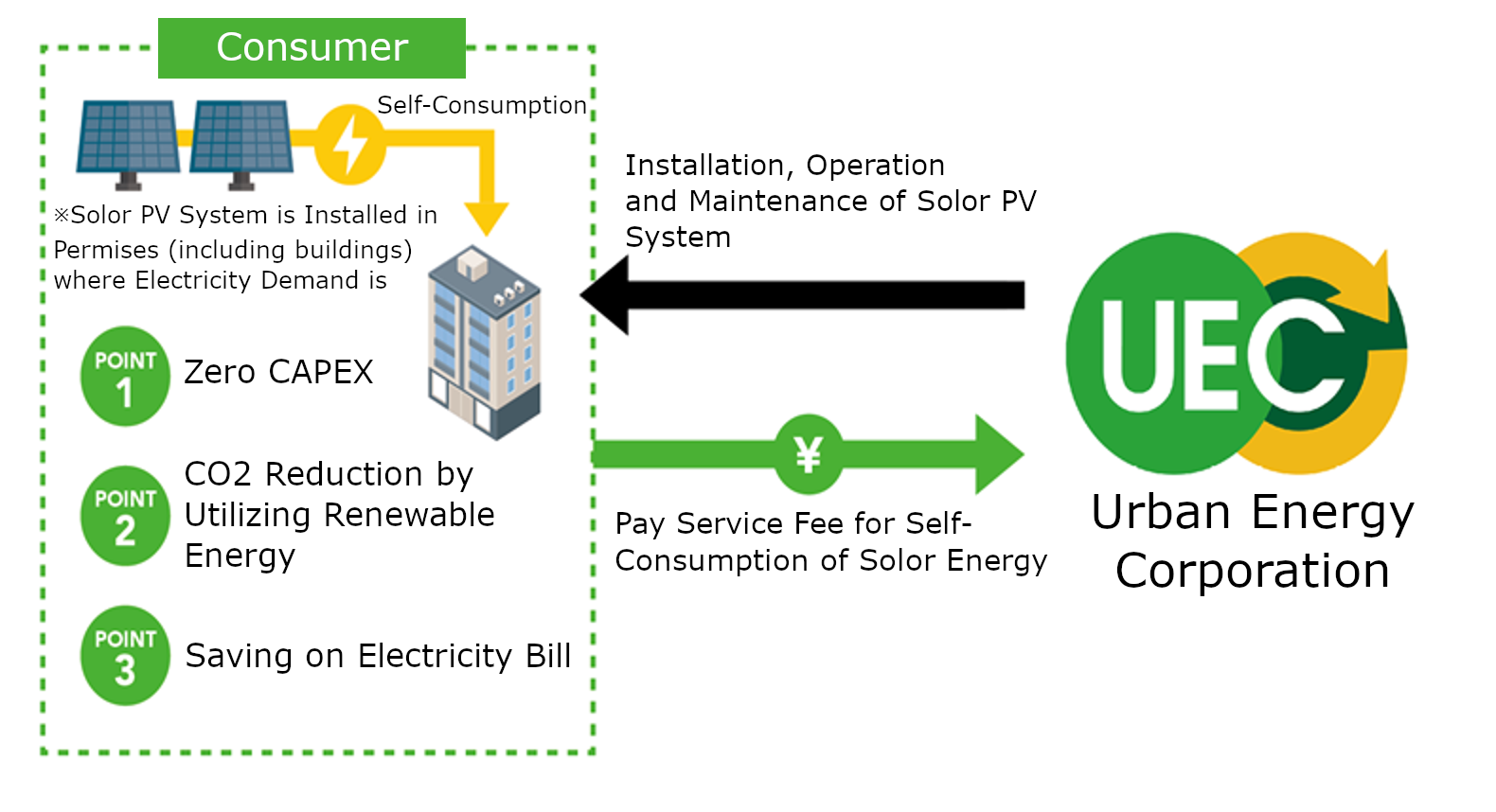
Digital Transformation Service for Boiler Power Plants (RODAS®)
RODAS® is JFE Engineering's brand for providing digital transformation (DX) service for boiler power plants. As shown in the following diagram, the service consists of a Global Remote Center for gathering real-time plant operation data under the company's cloud environment, and Pla'cello®, a data analysis platform for analyzing data. Various services can be developed and provided by combining the two technologies with expertise in boiler plant operations. Examples of tools and services that help improve the efficiency of plant operations include a downloadable tool that offers access to the latest operational and weather data anytime, anywhere; a visualization analysis tool that can be intuitively operated to run time-series data analysis; and a remote maintenance service for distributed control system. The new combustion control system is a plant operation optimization service that saves energy in fans used in power plants and reduces CO₂ emissions, leveraging the system development capabilities provided by AI in Pla'cello® to analyze big data.
RODAS® was highly regarded as a DX service that contributes to saving energy and won the Minister of Economy, Trade and Industry Grand Prize, the highest award under the Energy Conservation Business Models category of the Energy Conservation Grand Prize 2022. It has already been made available for some users of JFE Engineering boilers by being introduced to four plant sites under paid service agreement, as of March 2023. In addition to services already implemented, AI-based anomaly detection service, EPC, and other new services for improving the efficiency of work that requires expertise in plant operations are being developed in response to user feedback.
*An abbreviation for Realize Operation by Digitalizing, Analyzing, and Synthesizing, and it also means “a wheel” in Portuguese. It represents our vision to bring together integrated know-how and analysis of all data to realize advanced plant operation, as well as our approach to connect with users to move forward into a better future.
Won Energy Conservation Grand Prize 2022
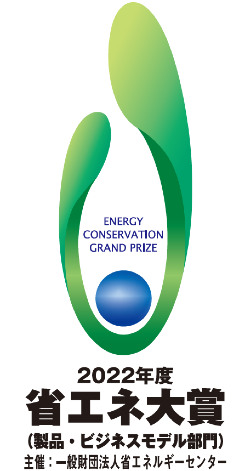
Diagram of RODAS®
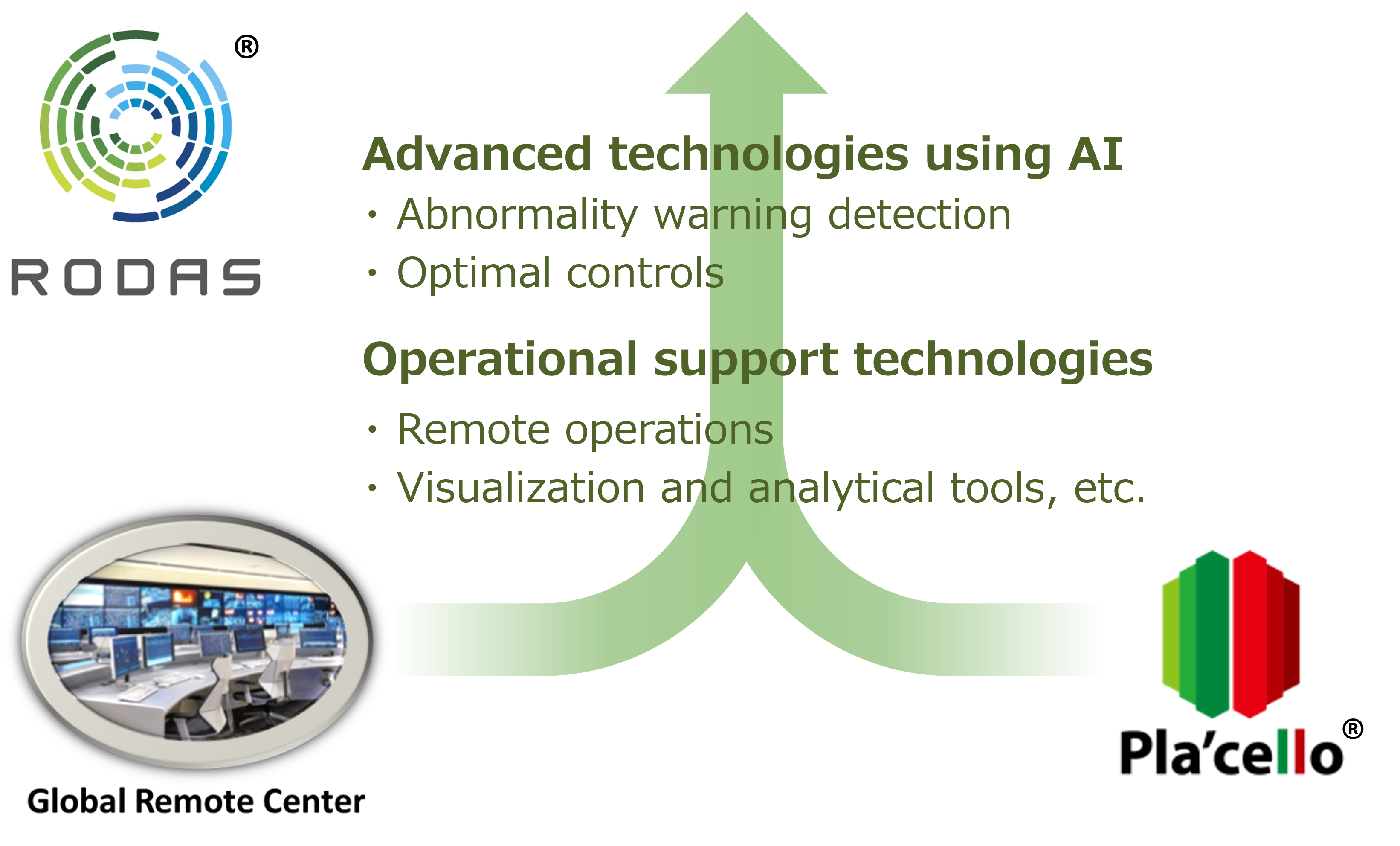
JFE Engineering's Digital Transformation Strategy (RODAS®)
Launch Dam Optimal Operation System that Employs AI
The Hokuriku Electric Power Company (Hokuriku Electric) and JFE Engineering have been conducting since FY2017 a verification test of the Inflow Prediction AI*¹, which predicts water inflow into Asaida Dam. In FY2020, the two companies began jointly developing the Dam Optimal Operation System, which also incorporates Dam Optimal Operation AI for planning optimal dam and power plant operations based on the Inflow Prediction AI.
The Dam Optimal Operation System suggests when to open the discharge gates of a dam or a power plant based on dam inflow information obtained from the Inflow Prediction AI as well as the respective dam operation rules for each dam. This will eliminate wasteful discharge and facilitate the generation of more power.
Following the verification test conducted at Asaida Dam, the two companies expanded the application to five dams in the Jinzu River system owned by Hokuriku Electric (Asaida Dam, Shininotani Dam , and Jinzu River No. 1, No. 2, and No. 3 Dams ) in FY2021 and began verifying the comprehensive optimization of the operation of all five dams. The results confirmed that if operators followed the AI's suggestions regarding operations, the amount of power generated by the hydropower plants in the Jinzu River system could be expected to increase by around 1% in total. Accordingly, the companies have begun to operate the Dam Optimal Operation System. Furthermore, since the Inflow Prediction AI and Dam Optimal Operation AI have been used to reduce floods*² caused by the early release of water from dams (under safe operation), a positive impact can be expected in flood control. We believe that the system will support local governments and dam managers while also helping to resolve regional issues. Going forward, we will incorporate cutting-edge AI technologies to keep the system advanced and evolving, and continue increasing hydropower generation as a source free of CO₂ emissions.
*¹A system that can make highly precise forecasts of inflows into a dam in the next 33 hours based on past rainfall and inflow data as well as rainfall predictions by the Japan Meteorological Agency.
*²Strong river currents caused by a rapid rise in water levels resulting from heavy rain.
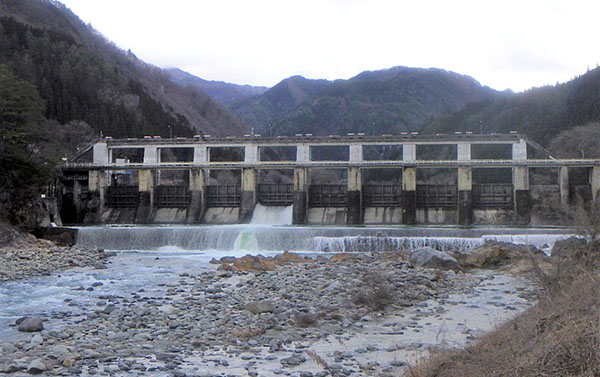
Launch Dam Optimal Operation System that Employs AI(Japanese only)
JFE Engineering's Digital Transformation Strategy (WinmuSe®)
Established the JFE Engineering Carbon Neutrality Collaborative Research Center with the Tokyo Institute of Technology
JFE Engineering and the Tokyo Institute of Technology opened the JFE Engineering Carbon Neutrality Collaborative Research Center (CRC) at the Institute's Laboratory for Zero-Carbon Energy under the Institute of Innovative Research on July 1, 2022. The purpose of the CRC is to promote new technologies for realizing a carbon-neutral society. The two parties are comprehensively and jointly working on technical developments in carbon neutrality, transcending the boundaries of a typical individual joint research framework to pursue a multilayered approach and generate innovation across the wide range of fields required for realizing a carbon-neutral society.
The CRC will promote the development of new technologies to help realize a carbon-neutral society by combining JFE Engineering's engineering technologies related to plant and infrastructure construction in the fields of energy and the environment with the Tokyo Institute of Technology's advanced academic knowledge in a wide range of areas.
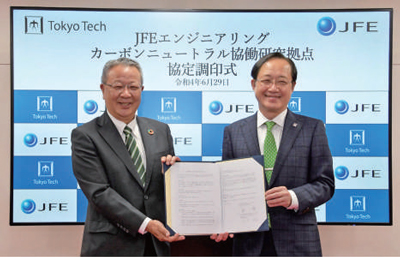
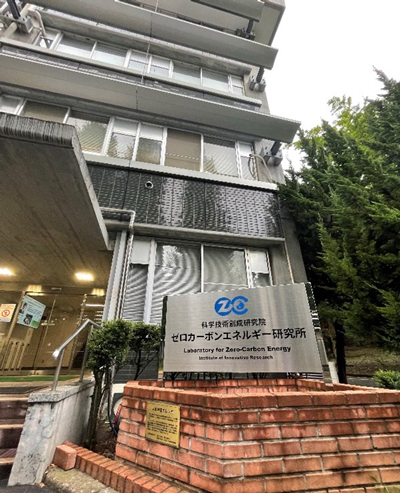
Realizing a Recycling-Oriented Society and Protecting the Marine Environment by Horizontally Recycling PET Bottles
Following the launch of the PET flakes plant in October 2021, Kyoei J&T Recycling Corporation*¹, a subsidiary of J&T Recycling Corporation*², began the full-scale commercial operation of a pellet production line after its completion in April 2022. Through bottle-to-bottle recycling technology that facilitates the repeated recycling of bottles (horizontal recycling), CO₂ can be reduced by 63% compared to manufacturing the bottles from crude oil (based on a calculation by Mitsubishi UFJ Research and Consulting ). The concept was introduced in White Paper on Manufacturing Industries (Monodzukuri) 2010, issued by the Ministry of Economy, Trade and Industry, as a case for responding to resource environment restrictions*³.
J&T Recycling endorses the activities of Japan Clean Ocean Material Alliance (CLOMA), an alliance for promoting initiatives to address the marine plastic waste problem, and engages in PET bottle and plastic recycling business as a member of CLOMA.
*¹Group company of JFE Engineering
*²Joint venture between J&T Recycling Corporation and Kyoei Industries Co., Ltd.
*³By Kyoei Industries Co., Ltd.
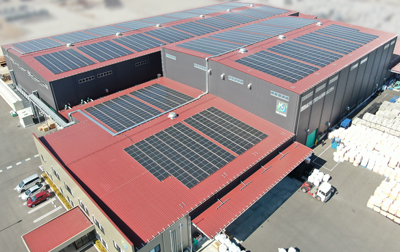
Horizontal Recycling of PET Bottles
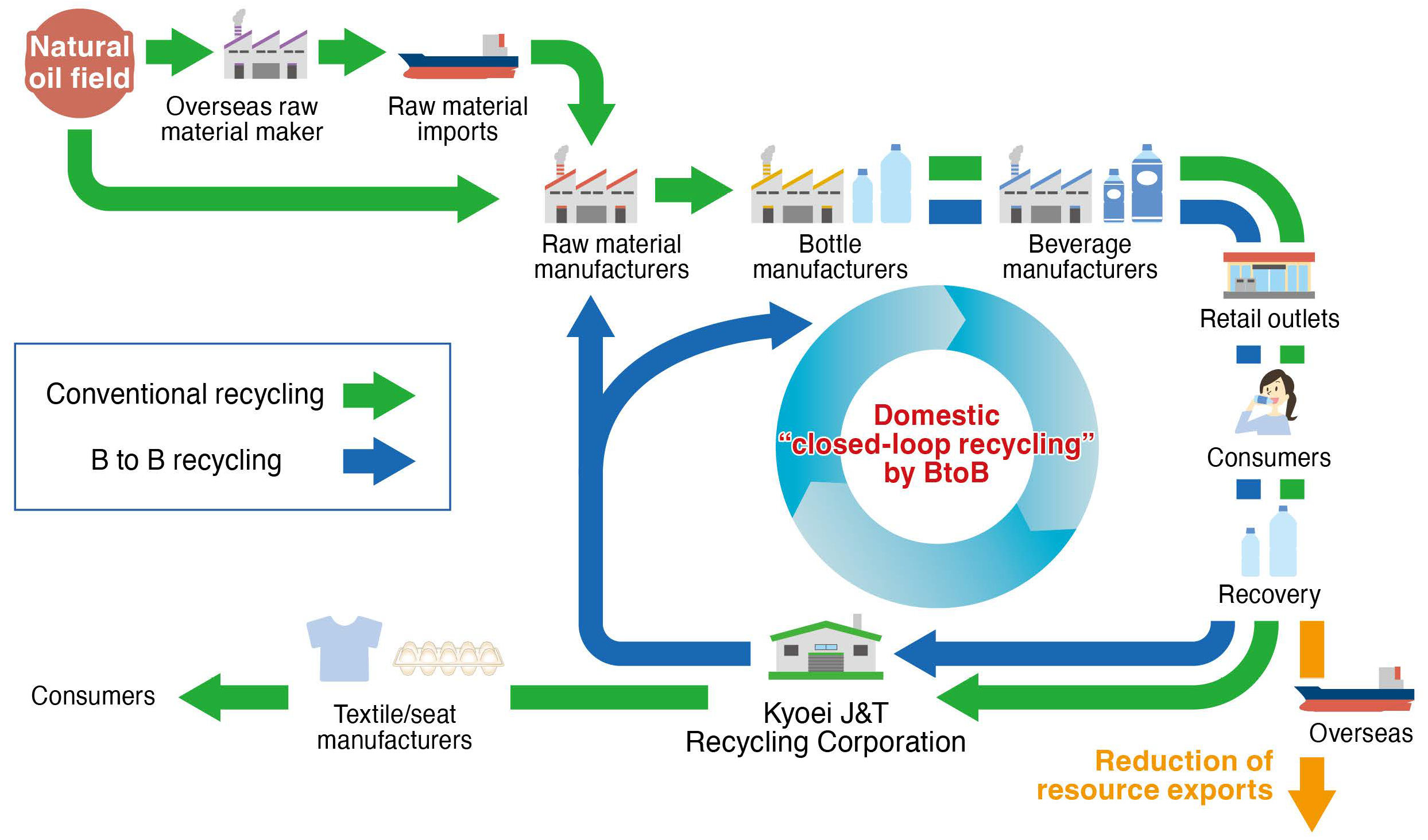
Overseas Infrastructure Businesses (Water Treatment Business in Southeast Asia)
JFE Engineering has formed a joint venture with Obayashi Corporation and other companies and was awarded the construction for a sewage treatment plant under the Jakarta Sewerage Development Project (Zone 1 ), which is supported by Japanese ODA loan, from the Directorate General of Human Settlements, Ministry of Public Works and Housing of the Republic of Indonesia.
In Indonesia's capital, DKI Jakarta , the population exceeds 10 million and sewerage coverage remains at 12%. Consequently, the installation of sewer pipelines and development of a sewage treatment plant are urgent priorities. The purpose of this project is to construct a sewage treatment plant in Zone 1, a particularly densely populated area consisting of many commercial facilities among the 15 sewerage zones under Wastewater Management Master Plan .
Given tight land restrictions, a drainage treatment technology using special film to filter (separate) drainage has been adopted to save space and enable high performance in water treatment, for constructing a sewage plant with a capacity of treating wastewater of 240,000 m3/day. The project also became the first in Indonesia to adopt a cutting-edge construction method that has been used in Japan. By comprehensively undertaking the process from design to construction, we intend to export high-quality infrastructure.
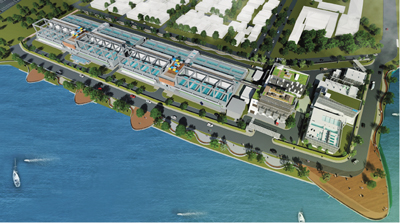
Overseas Infrastructure Businesses (Expanding Overseas Bridge Business into West Africa)
JFE Engineering is strengthening its overseas business as part of its growth strategy up to 2030. Developing social infrastructure such as bridges in countries and areas experience population growth is essential for contributing to achieving the SDGs across the world. JFE Engineering has been engaging in many overseas bridge construction projects with a focus on Southeast Asia and South Asia. Looking ahead, areas further west, Africa, and North America, are under consideration as prospective markets. Various projects for national economic growth are underway, and JFE Engineering was awarded an improvement project for Tema Intersection, Phase II in Ghana and another improvement project for intersections in Abidjan, the Republic of Cote d'Ivoire. By developing proposals that reflect an understanding of the needs and fully applying its technical capabilities, JFE Engineering will successfully complete these projects and contribute to building a foundation for daily life and the industry in these countries and West Africa.
Order Received for the Phase II of Improvement Project of Tema Intersection in Ghana
Traffic has been increasing in Ghana along with the country's economic development, and severe congestion is occurring in major arterial roads in Accra, the capital. Since this project takes place in narrow urban sites, the construction period must be kept short to minimize the impact on existing traffic already suffering from congestion. Furthermore, many of Japan's excellent sustainable technologies, such as highly durable steel/concrete composite deck slab and steel with extended painted life for improved maintenance, were adopted, helping to mitigate the burden of maintenance and management going forward.
Order Received for an Intersection Improvement Project in Abidjan, Cote d'Ivoire
In Cote d'Ivoire's largest economic city, Abidjan, traffic congestion associated with aged and underdeveloped road infrastructure has become chronic. This project is intended to realize smooth traffic by constructing flyovers at the three intersections along the arterial road crossing the city and creating multilevel intersections. JFE Engineering proposed value engineering after reviewing the design within the scope of the project specifications, which will significantly cut construction cost and reduce CO₂ emissions associated with the project by adopting local standards and allowing flexibility in design.
Major bridge projects outside Japan
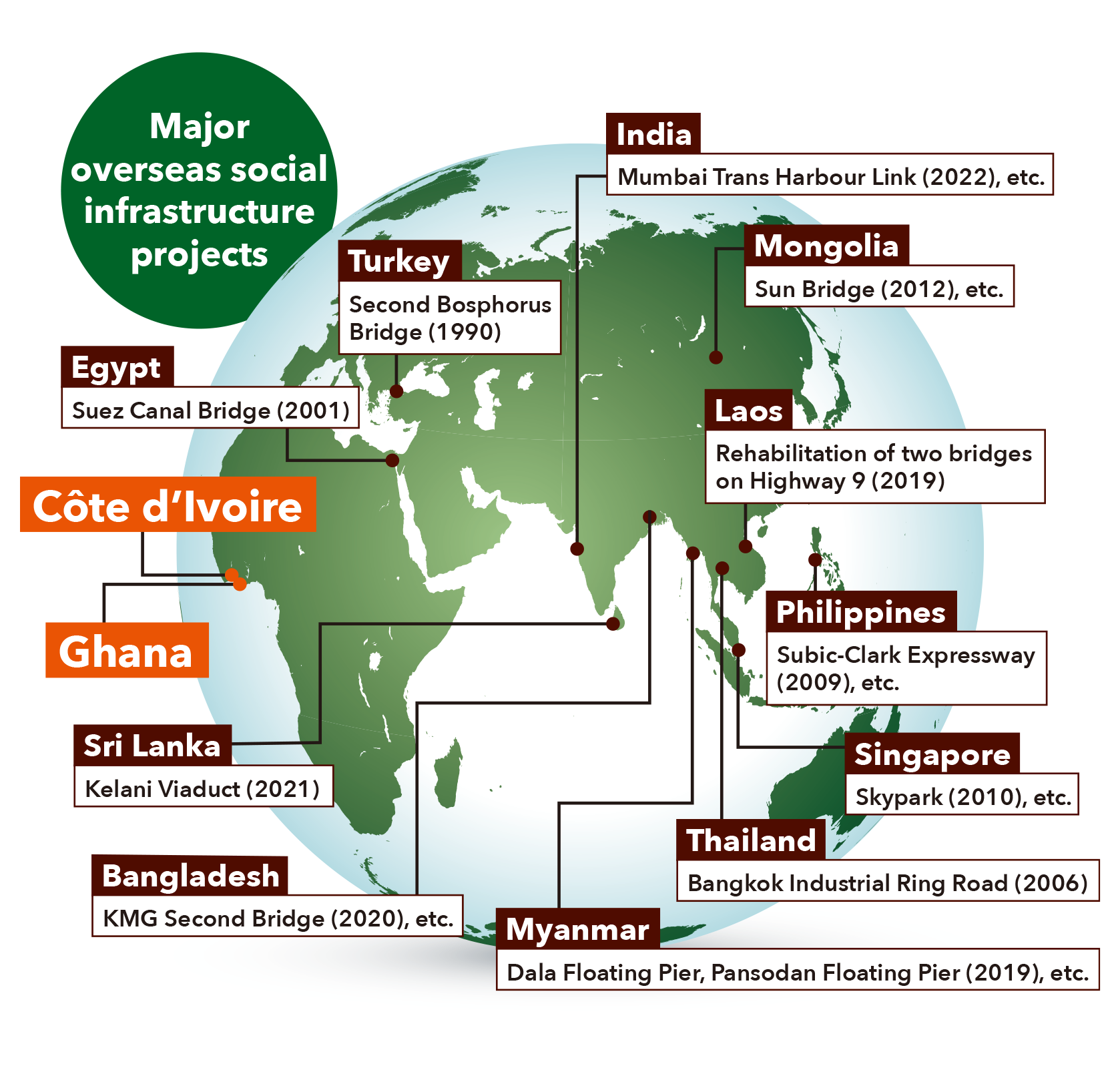
Rendering of the completed phase II project for the Tema intersection in Ghana
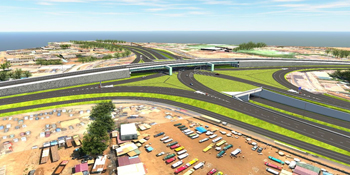
Rendering of the completed improvement project for the Palmeraie intersection, Abidjan, Cote d'Ivoire
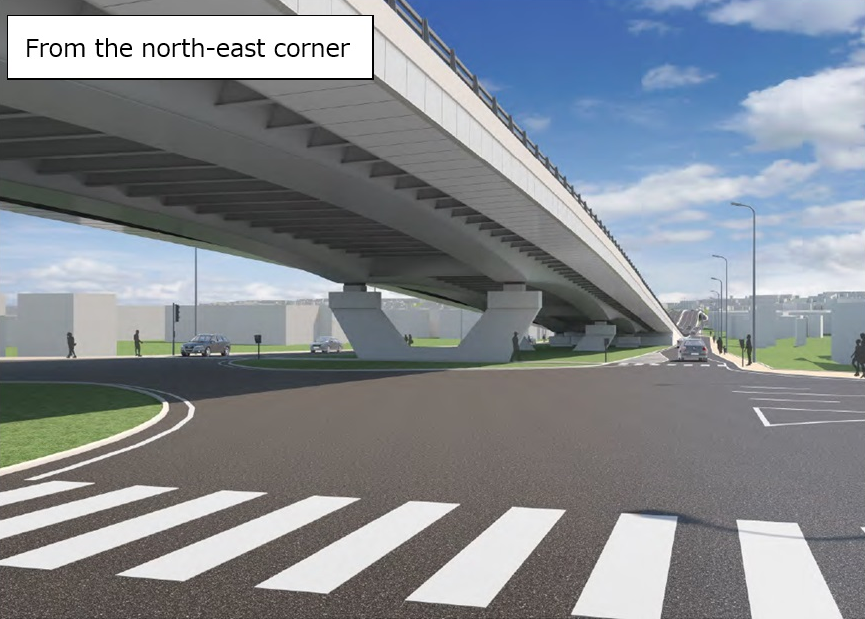
Contract Molding Business Using One of Japan's Largest Metal 3D Printers
In 2022, JFE Engineering Tsurumi works started a contract molding business using one of Japan's largest directed energy deposition (DED)* metal 3D printers. The application of metal 3D printers has been rapidly rising, centering on aerospace and automotive fields. And demand for applications are broadly increasing in Japan as well for plants in key industries such as power, oil, gas, and chemicals, as well as in industrial machinery.
For example, while the casting process requires large amounts of power and time to create a mold and melt material, both power and time can be significantly reduced by forming a shape with layers of thin metal materials based on a 3D model using a 3D printer. The final shape can be formed in a single process using this method (near net shape manufacturing ). Near net shaping manufacturing will also significantly boost yield, thereby reducing rare metal material loss.
The Tsurumi works has been manufacturing industrial machinery such as shield machines and steam turbines. We will combine the mechanical processing technology cultivated over the years with new manufacturing methodologies employing 3D printers to develop and promote the foundation of a new industry and drive technical innovation, in addition to developing manufacturing systems for new fields, including aerospace and automobiles. Furthermore, we are committed to preserving limited resources while realizing a sustainable society and supporting daily life, with due consideration for responsible production and consumption patterns.
*A type of 3D printing method; short for directed energy deposition. Under this method, 3D figures are made by irradiating a laser beam on metal powder and laminating by repeating the padding process of melting and solidifying.
Usage example (repairing abrasion of a double axel shearing cutter. Base material: SKD61, repair material: SKH51)
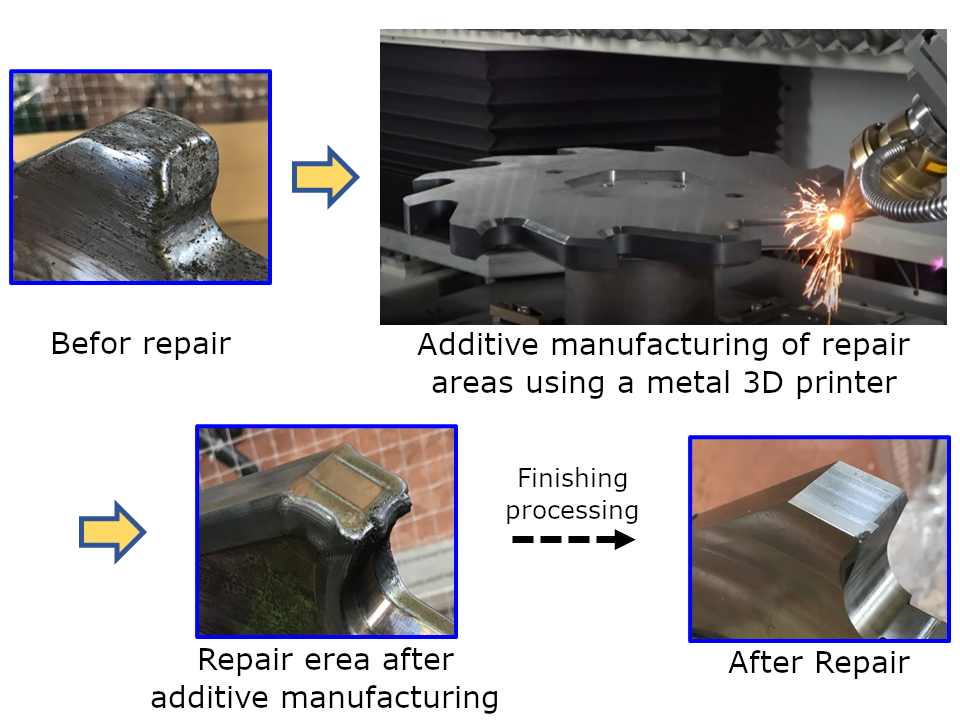
Metal 3D Printer Contract Molding Service (Leaflet) (Japanese only)
Further Expanding the Global Supply Chain for the Steel Sheets Business
The key factor in initiatives for countering climate change, including those for reducing CO₂ emissions, is minimizing electricity loss and using generated electricity without loss. Motors found in places such as power plants, factories and homes are responsible for 40-50% of all electricity consumed globally. In Japan, the ratio is approximately 60%. Improving the efficiency of motors by 1% in Japan would contribute to the equivalent of a 500,000 kW-class power generation plant in energy savings. Technological advances are expected in EV engine motors, for which demand is expected to rise during the transition to a decarbonized society, and as many as 50 to 100 other types of motors are installed per vehicle. We expect improvements in efficiency and further reductions in size and weight. In addition, in order to minimize energy loss while distributing electricity from source to factories and homes, continuous improvement in efficiency is required in transformers, where the most loss of electricity occurs.
JFE Shoji has established a stable global supply chain that includes sourcing high-quality electrical steel sheets which are essential for improving the efficiency of motors and transformers from JFE Steel and other manufacturers and processing the products for meeting customer needs. Customers who require high-quality electrical steel sheets, such as manufacturers of motors and transformers, typically operate manufacturing facilities across the globe. To align with this trend, the company has been expanding its electrical steel sheets supply chain based in a global quad-polar organization that includes Japan, America, China, and ASEAN. JFE Shoji is steadily taking action to capture demand, such as by reinforcing its stamping facilities at locations in and outside Japan to establish the world's number one global distribution and processing system for high-quality electrical steel sheets. By further expanding its supply chain and processing capabilities and collaborations with alliance companies, JFE Shoji is striving to significantly improve the distribution and processing of electrical steel sheets.
Building a Supply Chain for the Offshore Wind Power Generation Industry
Initiatives toward carbon neutrality are expanding around the world to tackle the shared issue of climate change. Japan has set its goal to achieve carbon neutrality by 2050 and formulated the Sixth Strategic Energy Plan in 2021 to lay out strategies to that end. These ambitious strategies include reducing greenhouse gas emissions by 46% in FY2030, boosting renewable energy in its electricity mix to 36-38%, and increasing the ratio of wind in the renewable energy mix to 5% (generating capacity of 23.6 GW) compared to the 0.9% (generating capacity of 4.5 GW) in FY2019.
As for offshore wind power generation, the industry is expected to expand, as targets were set to accept proposals to build 10 GW capacity by 2030 and 30-45 GW by 2040.
JFE Shoji is collaborating with a local enterprise that manufactures the windmill foundations in Taiwan, which is leading in the offshore wind power generation market, and have been achieving progress regarding supply chain of steel materials for foundation structures. Looking ahead, the company will capitalize on the knowledge acquired and contribute to the realization of carbon neutrality by establishing a supply chain that supports the domestic production of goods and the local economy while also meeting customer demand in the offshore wind power generation industry in Japan.
Expanding Business in Biomass Fuels
JFE Shoji imports palm kernel shells (PKS) to Japan from Malaysia and Indonesia and wood pellets from Southeast Asian countries as fuel supplies for domestic biomass power plants.
Not only are the PKS and pellets considered as carbon neutral fuel because they absorb CO₂ as they grow, but they are also part of a sustainable business model by replanting trees after harvest. Additionally, the company launched alternative fuel initiatives for exiting the use of coal as it strives to become an environmentally sound company.
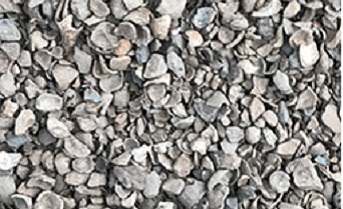
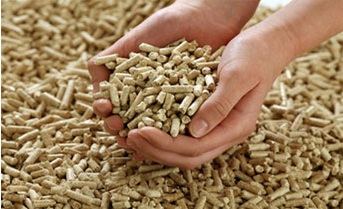
Expansion of Scrap Trading to Support the Development of a Recycling-Oriented Society
JFE Shoji engages in a recycling business for steel and aluminum scrap. Demand for steel scrap is particularly expected to grow in Japan and overseas as the global community advances toward carbon neutrality. JFE Shoji will contribute to building a recycling-oriented society by increasing scrap recycling across the globe.






